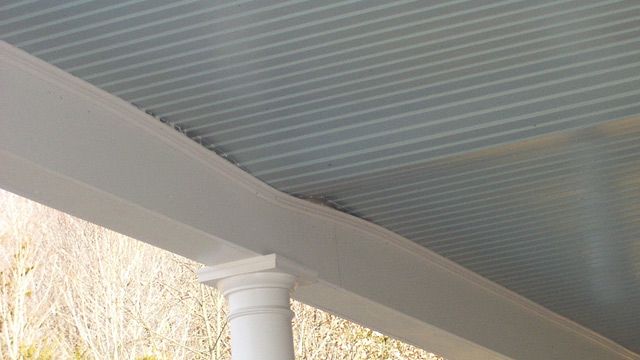Solid Wood Exterior Doors
Tips on building an exterior door with solid wood. September 7, 2011
Question
I want to get a few opinions on solid lumber door construction vs. laminated core construction. I don't do a lot of exterior doors. The ones I have done, I've glued up my own core and skinned it with 3/16" skins. According to the WOODWEB Knowledge Base, this is the best way to build a door. However, solid wood would be less work and would allow me to be more competitively priced. Most of the doors I'm asked to quote are 1.75" thick by 3/0 x 7/0 or less, and covered by a porch and/or storm door. Our climate is fairly mild, so extreme weather isn't a concern.
Any opinions? I'd think smaller, well-protected doors would be fine to build as solid wood, but don't have any experience to draw from (and don't want to make my own mistakes if I can learn from others).
Forum Responses
(Architectural Woodworking Forum)
From contributor K:
Solid wood frame and panel and plank doors have been made successfully for hundreds of years. For a small shop, solid lumber can offer time savings over edgebanding and veneering an engineered core or laminating thinner lumber. It may have a higher material cost depending on what you are using as a core. Solid wood requires more attention to stock selection and preparation - you are more likely to get a flat door if the parts are roughed out to approximate size, allowed to rest before milling to near final size, and allowed to rest again and twisted parts culled out before final milling. Exterior doors are particularly prone to movement due to varying conditions inside and out, so stable (and rot resistant woods) are preferred. A consideration also is the ability to get the required dimensions out of available lumber. It can be difficult to get a full 1 3/4" x 7' stile out of 8/4 in many cases. There are a lot of variables to consider, and both solid wood and engineered cores have their place, but I personally don't have a problem with building solid wood doors using appropriate techniques.
If you feel more comfortable building a veneered door, you might look at buying sheets of laminated door core material to lower your labor cost.
From contributor D:
Storm doors can make the situation worse sometimes, not better. I could see solid components in a stile and rail, floating panel type door, but not a solid slab. Recipe for disaster in my opinion - 100% chance of warp. Rather than fear the extra work in engineering a door, look at batch processing, or as suggested, purchasing engineered components.
From the original questioner:
Thanks. Typical stile and rail with panels is where I would plan on using solid lumber. I've built a plank-style door and am currently matching a door with 10" stiles (door core for both). What about face gluing 4/4 to achieve 1.75" thickness?
From contributor D:
There was someone here about two years ago in Wisconsin building about 200 doors a month like that and having problems. It's better than solid, and we did it for a few months before we finally went down the fully engineered route. I remember typical 3-0 6-8 six or eight panel designs seeming to fair okay, but the bulk of our work is larger French doors with lots of glass. These were more prone to warp. Not an experience I'd care to go through again.
From contributor M:
I agree with contributor D. You are always going to run the risk of warp going with a two ply door. Sometimes they will, and sometimes they won't. You just don't ever know. Having a balanced stile is just as important here as it is in a laid up panel. Either find straight 8/4 stock, go with an engineered core, or go with a 3 ply stile and don't worry about it.
From contributor A:
I also agree with contributor D. Two ply doors have great risk with warp, especially in the future. And once the door warps, it is difficult to get it back in balance.
From contributor L:
I have built solid wood doors for over thirty years with mostly good results, a few warped of course. I have also used engineered stiles and rails to very good effect on interior doors. I buy the stiles from a reputable manufacturer cheaper than I could make them myself. I haven't had a problem yet. On exterior doors I would be sure the core is something rot-resistant.
From contributor B:
If you're going to make solid wood doors, I would use mahogany, but recently used roasted poplar with good results.
